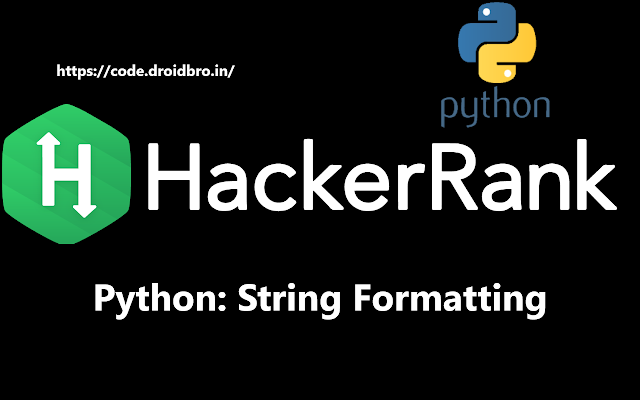Given an integer,n, print the following values for each integer i from 1 to n:
Decimal
Octal
Hexadecimal (capitalized)
Binary
Function Description
Complete the print_formatted function in the editor below.
print_formatted has the following parameters:
int number: the maximum value to print
Prints
The four values must be printed on a single line in the order specified above for i each from 1 to number. Each value should be space-padded to match the width of the binary value of number and the values should be separated by a single space.
Input Format
A single integer denoting .
Constraints
1≤n≤99
Sample Input
17
Sample Output
1 1 1 1
2 2 2 10
3 3 3 11
4 4 4 100
5 5 5 101
6 6 6 110
7 7 7 111
8 10 8 1000
9 11 9 1001
10 12 A 1010
11 13 B 1011
12 14 C 1100
13 15 D 1101
14 16 E 1110
15 17 F 1111
16 20 10 10000
17 21 11 10001
Solution
def print_formatted(number):
if 1<=number<=99:
blen = len(str(format(number,"b")))
for i in range(1,n+1):
print("{0:d}".format(i).rjust(blen),end=' ')
print("{0:o}".format(i).rjust(blen),end=' ')
print("{0:X}".format(i).rjust(blen),end=' ')
print("{0:b}".format(i).rjust(blen))
if __name__ == '__main__':
n = int(input())
print_formatted(n)
